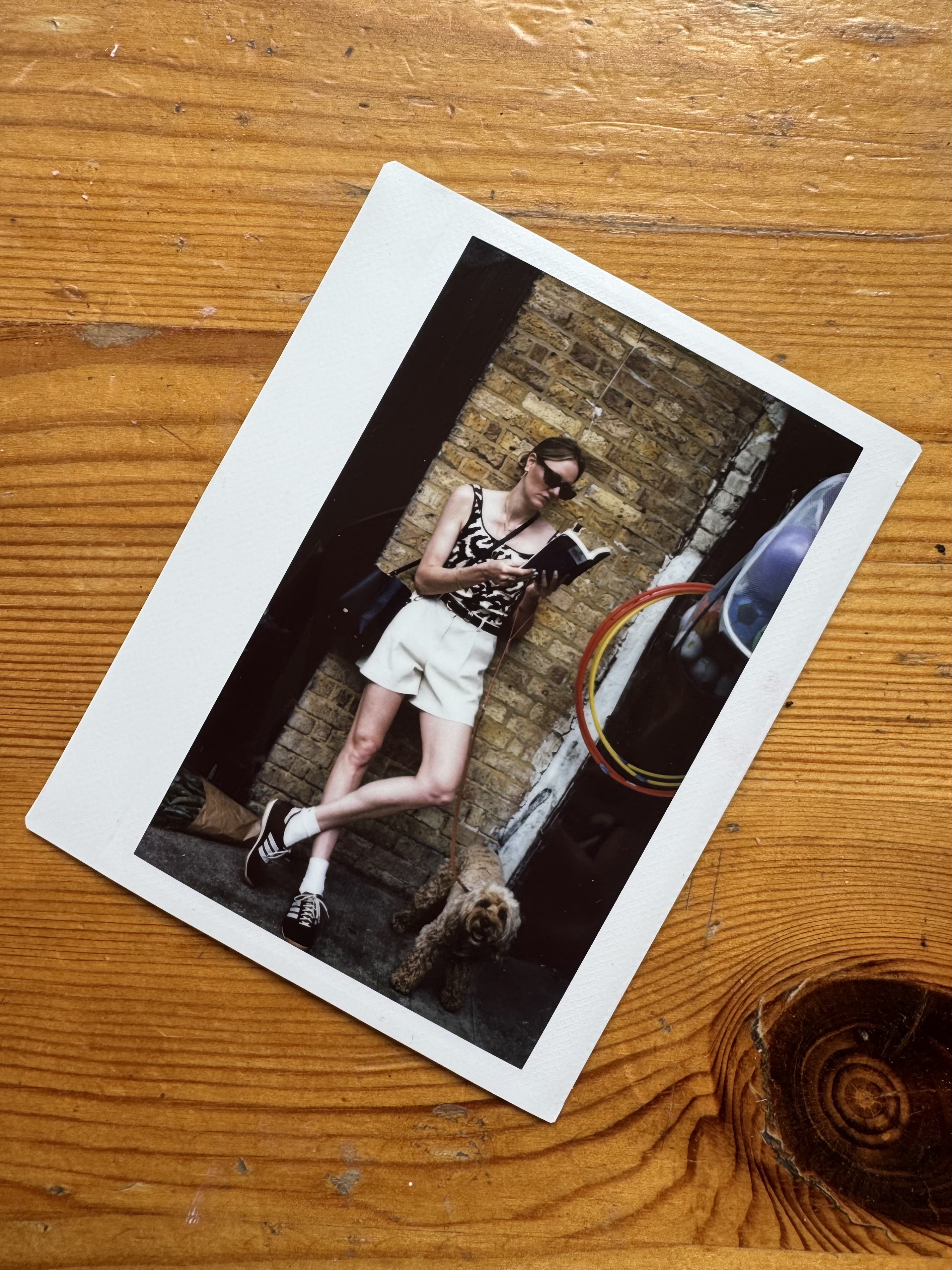Media Diet

Image courtesy of AM
A series exploring the media “input” of a group of people — our commercial semiotician colleagues, from around the world — whose “output” we admire.
London…
SEMIOVOX
What forms of media do you “take in” the most regularly/frequently, during a typical day or week?
ASHLEY MAURITZEN
A good nutritionist would call me up on my media diet. It’s woefully inconsistent — I alternate between periods of prolonged fasting and epic binges with varying degrees of physical and psychological fallout. If I invested in a meal tracking app, the meal tracking app might refund me.
But feast or famine, there is one single point of media constancy — I have listened to a BBC Radio 4 soap opera called The Archers every morning, Sunday through Monday, since October 2014. For the non-Brits, The Archers is “a contemporary drama in a rural setting” (I took that off the website) that’s been running since 1950. My personal episode count must sit at 3000-plus.
Why do I listen to it so religiously? Because, despite a recent flurry of topical storylines (from coercive control to sewage leaks), The Archers remains exceptionally twee — a nostalgic homage to tight-knit village life and a lost symbiotic relationship with our “green and pleasant lands”. Resolutely Middle Class and Middle England, it’s the dramatic equivalent of a blue-rinsed perm or a set of ceramic flying ducks on a wallpaper backdrop. Catching a 13-minute episode is like taking a quick restorative bath in a milky cup of Earl Grey tea.
It’s also a fantastic platform for bonding of the most thrillingly covert kind. Archers fans are the OG Swifties — but we operate undercover because it’s so damn embarrassing. Finding out — through a complex system of cryptic allusions — that someone else is a listener is solid ground for a life-long friendship.
But above all, I love The Archers because its sprightly orchestral opening (a “maypole dance” — naturally) is the sound of my day beginning. Amid so much flux (glorious and otherwise) it constitutes a single small sacred marker of continuity and routine. Media content is so important. But media context is always king.
SEMIOVOX
What work of literature (old or new) would you recommend to someone trying to make sense of today’s world?
ASHLEY MAURITZEN
Two suggestions here (and I’m afraid they’re both about accepting the lack of sense).
Firstly, ghost stories. Preferably of the nineteenth century / early twentieth century variety. MR James (the master), EF Benson, Algernon Blackwood, Edith Nesbitt, Evelyn Wharton, Henry James — I’ve been reading them on repeat since I was a spooky little girl. Personally, I would advocate strongly for a profound and enduring sense of the uncanny as philosophy — a shifting, lateral perspective that takes nothing as granted. People, places and things — we are all haunted by what came before and would be foolish to forget it. And no law is simple or sacrosanct — be it governing life and death or how we do our living.
Secondly, Herman Hesse’s 1922 spiritual masterpiece Siddhartha, which follows a young brahmin’s journey towards enlightenment. Hesse sums up the protagonist’s journey succinctly — “he does not, in the end, learn true wisdom from any teacher, but from a river that roars in a funny way and from a kindly old fool who always smiles and is secretly a saint.” As an academic sort, I spent years trying to make sense of it all cognitively — searching for the answer by overloading the shelves of my mental library. It’s not like that today. Reading is where I do my research. Life is where I do my learning.
SEMIOVOX
What else do you want to share about your media diet?
ASHLEY MAURITZEN
As a semiotician, I consume a lot — high and low, fast and slow, the kind of films you lead with at dinner parties and the kind of TV you watch with a blanket over your head like a Michelin chef eating a McNugget. Sometimes, it’s where I’d choose to hang out. And sometimes, it’s not.
Which is why, a few years ago, after an intensive 6 weeks on TikTok, I impulsively set off on the Camino de Santiago — a thousand-year-old pilgrims’ route. Alone in the Galician countryside, I felt a sudden seismic appreciation for nature as media — not a human-made channel but a means of communication, nonetheless. For most of my life, I wouldn’t consume media unless it had a human (or a dog) in it. Today, when I look at a landscape, I glimpse the face of something else. And I feel myself (my higher self, my right-sized self, my least “self” self, whatever you want to call it) looking right back at it.
MEDIA DIET: GIANLLUCA SIMI (Brazil) | HIBATO BEN AHMED (France) | MARIE LENA TUPOT (USA) | EUGENE GORNY (Thailand) | YOGI HENDLIN (Netherlands / USA) | INKA CROSSWAITE (Germany / South Africa) | SÓNIA MARQUES (Portugal) | ĽUDMILA LACKOVÁ BENNETT (Czechia) | BRIAN KHUMALO (USA / South Africa) | JIAKUN WANG (Shanghai) | FRANCISCO HAUSS (China / Mexico) | ASHLEY MAURITZEN (England) | STEFANIA GOGNA (Italy) | BECKS COLLINS (England) | ANTJE WEISSENBORN (Germany) | MARIANE CARA (Brazil) | MARTHA ARANGO (Sweden) | PAULINA GOCH-KENAWY (Poland) | COCO WU (Singapore / China) | JOSH GLENN (USA) | JENNIFER VASILACHE (Switzerland) | ANDREA BASUNTI (England) | SARAH JOHNSON (Canada) | MARIA PAPANTHYMOU (Greece) | VICTORIA GERSTMAN (Scotland).
Also see these global semio series: MAKING SENSE (Q&As) | SEMIOFEST SESSIONS (monthly mini-conferences) | COVID CODES | SEMIO OBJECTS | COLOR CODEX | DECODER (fictional semioticians) | CASE FILE | PHOTO OP | MEDIA DIET | TATTOO YOU (semioticians’ tattoos).

